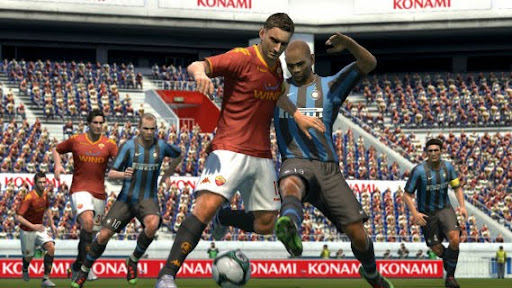
If Konami Japan were a girl, it’d be the reserved, beautiful one: the girl you want to talk to but are not quite sure how to approach her, in case you give offence and ruin your chances forever. Unlike other companies, who are more confident in proclaiming their assets, ‘putting out’ for anyone who takes an interest, Konami is shy. Konami has never invited a bunch of cynical journos like us to visit her in Japan, where she’s promised to expose her innermost secrets to us. So we want to be gentle, so we don’t blow the opportunity, but on the other hand we’re rag-tag bunch of cynical journalists and we’re probably just going to do what we always do; call it as we see it.
Rag-tag or not, Konami hand-picked us to visit their Tokyo HQ to bear witness – and, more importantly, play – their new baby, Pro Evolution Soccer 2011. The company’s reticence was not for show. This was, staff told us, the first time they’d opened the doors to their development studios to outsiders and they were clearly eager to please. First off was a trip to their posh HQ in the sparkly-new ‘Midtown’ area, just outside the famed bar and club district of Roppongi. After a warm welcome from Aki Saito, Manager of the International Team at Konami and an introduction to the staff assisting us all on the trip, we were treated to an address from Shingo Takatsuka, or ‘Seabass’ as he likes to be known. Lionel Messi, Argentine and Barca player, is clearly still in Seabass’ good books, apparently making a return to PES 2011 as poster boy, with his name used to illustrate just about every example Seabass wanted to make.
Seabass acquired his nickname out of his love for fishing – at least he didn’t choose ‘Haddock’ – and the head of PES production was out of the gate fast with what he sees as the central pillars of PES 2011; namely, ‘freedom’ and ‘change’. A good start. There was a fair bit of talking, and some amusing demonstrations to underline the points made, so we’ll cover that as we bring you our impressions. But the proof of the pudding is always in the eating, and that’s what Seabass had invited us all here for. A studio tour, a chat with some of the people responsible for the sound, AI, animation, interface, motion capture and special effects, then we get our hands on the game itself.
The first thing you notice is a very good thing – Konami has definitely sharpened up its act regarding presentation. The front end of the game is now far better looking, as well as being a lot less likely to induce an epileptic fit in viewers – and it doesn’t just apply to the menu screens. The entire interface has been overhauled, with emphasis on the team management screens, which now use a ‘drag and drop’-style system. Selecting tactics, reconfiguring your team’s formation, subbing positions and tweaking the lanes for individual players is now all done while looking at a visual representation of the footy pitch from overhead and as simple as moving your cursor to a player or item, selecting it, then to replace Heskey with Crouch at the front in the England squad, for instance, dragging off to the side of the pitch diagram where your possible substitutions are highlighted. One more click and the swap is made. It’s all far more visual in nature and a lot more intuitive as a result.
Once you’re ready to hit the pitch, fans of the series will immediately notice that everything’s a lot better looking – much better lighting effects, better stadia, and new cameras, two of them in fact, which Seabass describes simply as ‘broadcasting’ cameras, exactly mimicking the elevations and angles you see when watching games on TV, which also differ depending on the stadium. Less easy to spot as they stand waiting for the off, is that Konami has apparently spent a lot more time this year detailing different player builds and musculature – most noticeable, we’re told, on the Ivory Coast boys given that they have the dubious honor of wearing the tightest World Cup 2010 strip of them all!
The biggest learning curve, especially for novice players, dawns on you right away. As soon as you’ve kicked off, you’re going to experience what Konami has dubbed ‘total control’, which is clearly more optimism than fact as you get used to the new ‘freedom’ passing. Every player now has an individual power bar, which appears below their feet. It’s not as intrusive as it sounds, but heralds one of the big changes that Seabass spoke about: no more assists from the AI, forcing gamers to properly determine the degree of power behind every pass, dead-ball kick, throw-in and shot or else see it go wildly astray or limp pathetically into space to be collected by the opposition. These power bars actually prove very useful, as you don’t have to take your eyes off your man with the ball while powering up a shot or pass.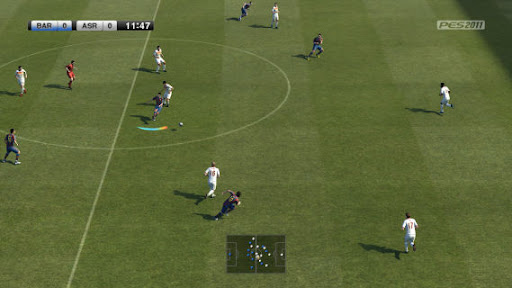
However, this ‘freedom’ in player control presents other challenges. Supplanting the ‘hold X to press a player’ in 2010’s game are three new defensive methods. Hold X now and direct the stick towards the ball carrier, and you’ll actively make a play for the ball; hold X without stick input and your player will close in to the ball carrier and stick his foot in only if the attacker stops. But the most controversial is the third option – hold X and push the stick toward your own goal. This has the effect of making your defender ‘stick’ to the ball carrier, even matching him for pace, so you don’t need to hold down the R1 sprint button, effectively hampering his forward progress and holding him up. It’s a great tactic, but this advanced defensive move of pushing the stick towards your own goal felt counter-intuitive and, in play, that unease was justified far too often with unexpectedly winning the ball but, because the stick was pushed towards your own goal and you were holding the pass button, accidentally passing the ball back towards your keeper or, worse, into the path of an incoming opposition player as you switched to being the ball carrier. Mistakes like this would likely lessen with practice and time, but happened frequently in the few play sessions we had.
Turning on a dash of speed while dribbling has always only worked in 16 directions for the past 15 years of the franchise but this year, there are some players who can move far more freely. Dubbed ‘Speed Stars’, and limited to “only 15 or 20” players in the whole game, these guys are capable of much defter turns while sprinting and you’ll likely only recognize their Speed Star status once they’ve screamed past you on their way to goal. The best way to stop them, we’re tutored, is to use the new, advanced defensive moves, but in practice this is more fiddly than you might hope.
Jinks, feints and dummies – another area that’s seen a lot of additions this year and intended to be truly effective maneuvers, rather than just ‘showcasing’ as in previous iterations – didn’t really work well, at least not in the build we played, and there were many instances of players stuttering or being stunned into inactivity after a tackle or jostle. Speaking of jostling, it seemed very one-sided, with the CPU players able to knock us off the ball far more easily than we could return the favor. But, as we mentioned, the build we were playing was early enough for this kind of thing to be ironed out in the final game.
Goalkeepers were efficient at closing down the angles but not superhuman – we found that you were more likely to score by passing around and into the box, even from the wing, and finishing with a smartly-placed ball that was too fast for the goalie to reach. That said, we were able to score several goals from headers passed in from the side and, on one notable occasion, a dramatic and very satisfying volley. Occasionally, the keeper would also become frozen in place, standing motionless and watching the ball sail past him into the back of the net; another annoying bug that we’re confident will be addressed. Penalties now use a system similar to that found in free throws in basketball, with players having to stop the slider on the ‘sweet spot’ for a good strike, as well as place the shot, which has also had the effect of making penalty shootouts more fun than before.
Deeper management options and the Master League were not available to us to sample, but from what we’ve played, Konami appears to be closing the gap to ‘that other game’, FIFA. Certainly, the presentation looks more ‘bling’ and less of an afterthought than in previous years. Player AI was decent, player momentum and inertia have become significant considerations , defenders have more options than the rather ineffectual ‘press’ of previous years, goalies (on the whole) were responsive and the refs weren’t afraid to dole out the odd red or yellow card. Konami needs to fix the frequent stuttering and freezing, and we don’t know if the improved presentation extends to rewarding the player (as FIFA does so well) for securing victory – maybe it’s down to the emphasis on authenticity but playing the game feels more like a chore than being genuinely fun. It’s perhaps too early to pronounce on whether PES 2011 is going to right every perceived wrong that its predecessor brought, but this year it’s clear that Konami has been listening to its legion PES fans and has focused on making the right improvements to the game. We’ll have more details on PES 2011 as its Autumn release date looms.


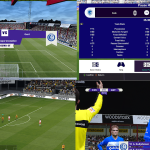

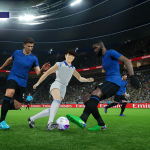
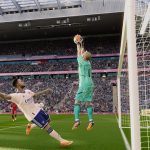
wow its very good but please can get to we more picture
can we please se the whole gameplay like the new teams, leagues, players,
become a legend mode, master league and the exhibition
please tell me how to install fifa world cup 2010 patch. …